Chicken Adobo
on May 08, 2022, Updated Jan 18, 2025
This post may contain affiliate links. Please read our disclosure policy.
Fall-apart tender chicken in a salty-sour sauce is one of the hallmark dishes of the Philippines and for excellent reason.

The first time I tasted chicken adobo (adobong manok), the national dish of the Philippines, I was blown away. The salty-sourness of the sauce, made with soy sauce, vinegar, bay leaves, and peppercorns, and the fall-apart tenderness of the dark-meat chicken, just wow. It’s exactly the kind of food we food writers describe as addictive. I knew this unctuous braised chicken dish was destined to become part of our family’s dinnertime cannon.
Researching chicken adobo became a little project for me. Two of my friends (sisters and part of Team Mom 100) are Filipina on their mom’s side, and there was no way I was going to publish this recipe unless I got their thumbs up. I deep-dived into the world of adobo and took advantage of quite a bit of texting for advice with Victoria and Cialina (and, most importantly, their mom!). After a few tries, this chicken adobo recipe not only got the thumbs up from my friends but also from their brother AND their mom, which I do not take lightly.
By signing up, you agree to our Privacy Policy.
Rice is a must with adobo (whether wet or dry!)! White rice is traditional, and brown would also be lovely.
What's In This Post?
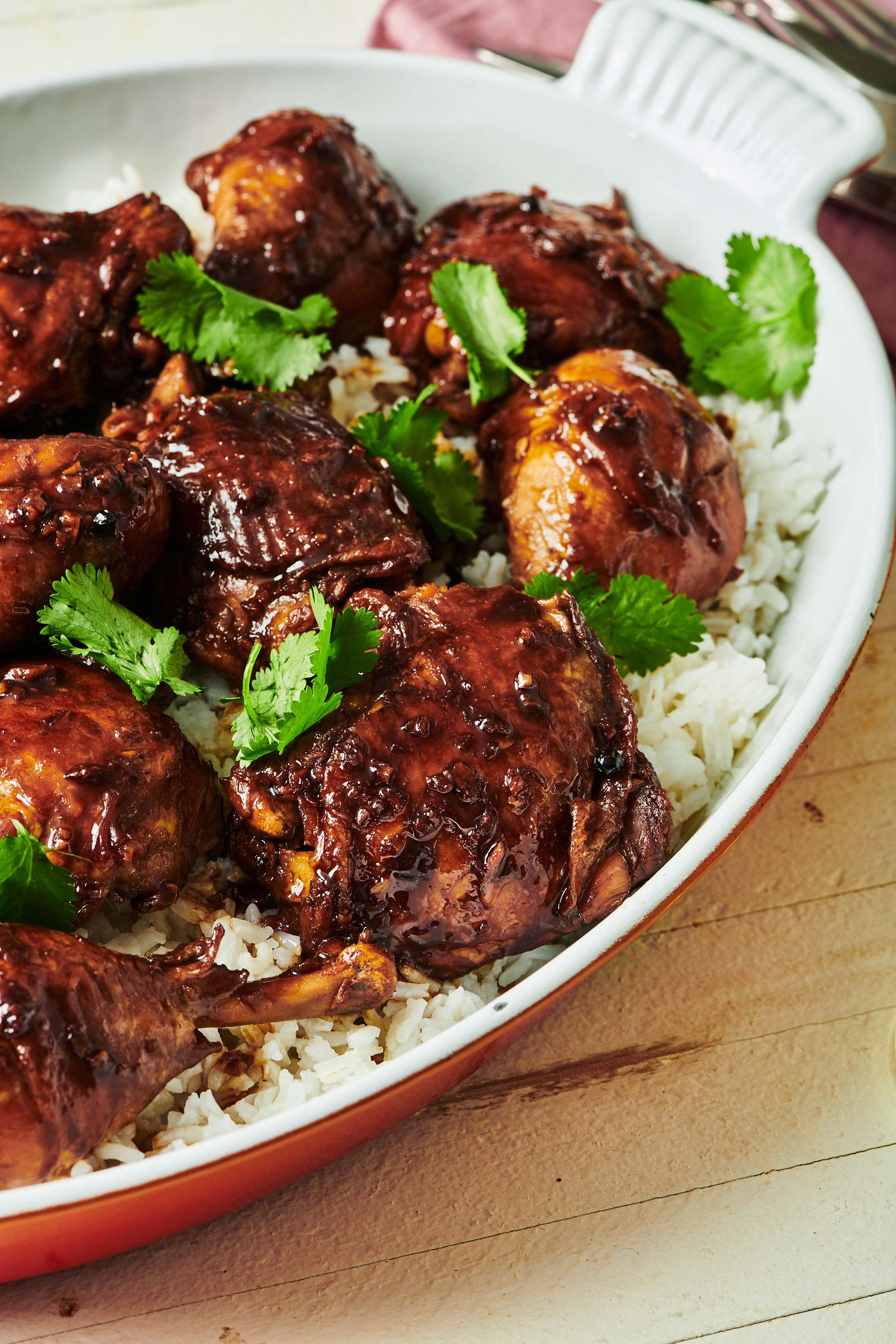
Chicken Adobo: Fall-apart tender chicken in a salty-sour sauce is one of the hallmark dishes of the Philippines, and for excellent reason.
What Is Adobo?
Adobo is a stewed dish, usually made with chicken or pork. It reflects the Spanish and Mexican influences on Filipino food, but it has an emphatic level of sourness, which is one of the hallmarks of Filipino food. I learned much about adobo and the flavors of the Philippines from I am a Filipino: And This is How We Cook by Nicole Ponseca and Miguel Trinidad. If you are a fan of Filipino food, you should lay your hands on that book.
As with any beloved national dish, recipes vary widely, and many cooks have little tricks and techniques that they use (and again, as with many coveted recipes, not everyone wants to share all of their techniques!). If you talk adobo with anyone who grew up with adobo, they will probably tell you their mom’s (Nanay’s) or grandmother’s (Lola’s) is the best.
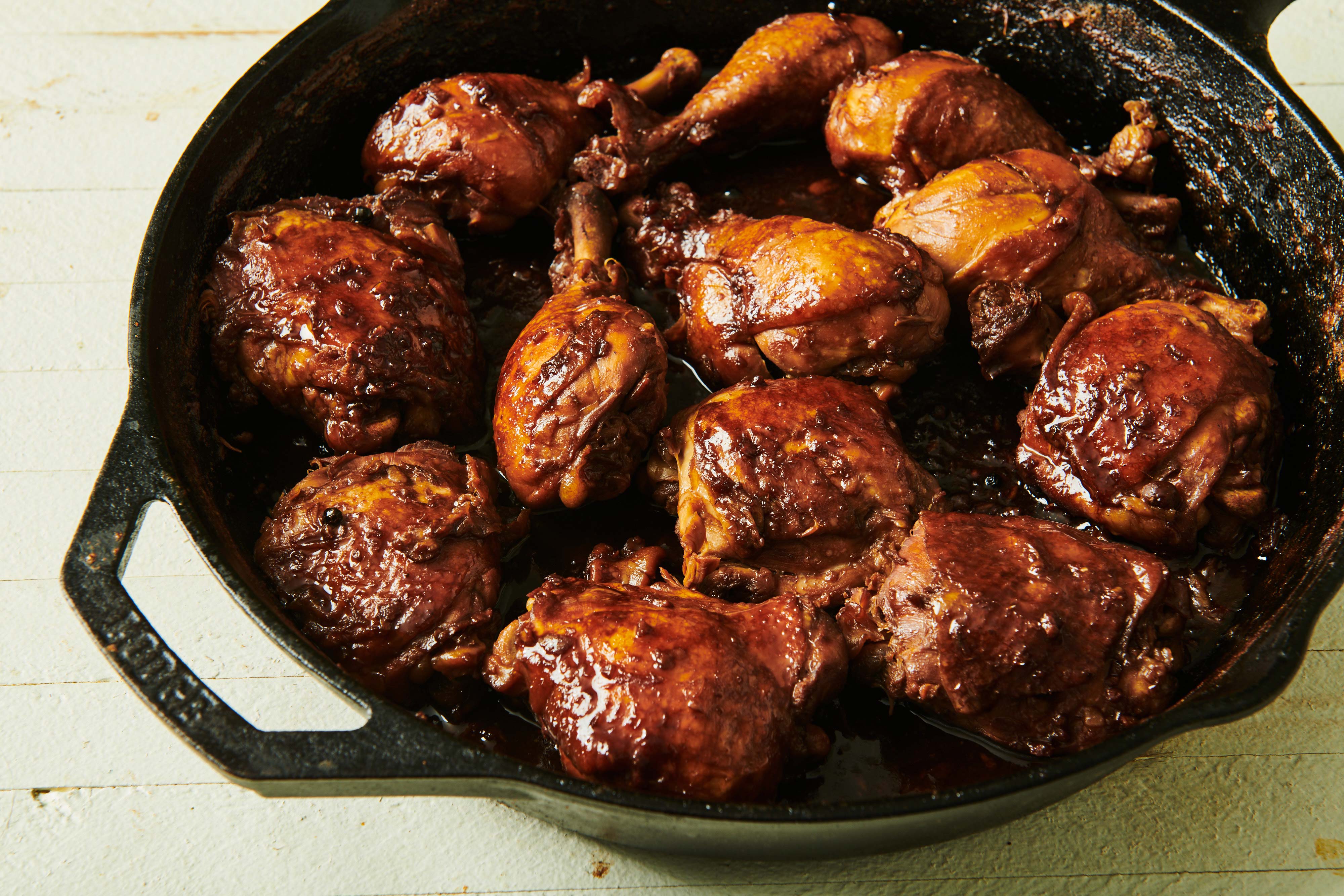
Ingredients for Chicken Adobo
- Minced garlic – An essential part of the adobo marinade, infusing the chicken with flavor.
- Vinegar – The best, most authentic kind of vinegar to use in adobo is sukang maasim, a Filipino type of vinegar. I definitely recommend this two-pack of the most popular vinegar and soy sauce used in making adobo. If you can’t get your hands on it, white wine or rice vinegar will work, too.
- Soy sauce – Silver Swan is the most popular brand of soy sauce in the Philippines, thick and salty. But you can use whatever soy sauce you have on hand.
- Bay leaves – A staple in adobo.
- Fish sauce – Brings the essential saltiness, umami, and depth of flavor to the sauce.
- Brown sugar – Dark or light brown sugar both work. They give the adobo an almost caramel-y flavor.
- Whole black peppercorns – Another essential adobo ingredient.
- Chicken thighs or legs – Select bone-in chicken pieces, preferably dark meat.
- Chicken broth – Use a broth with less sodium, as the soy sauce and fish sauce have plenty of salt.
- White rice – Fresh, hot white rice is the perfect companion to adobo, soaking up all of that wonderful sauce.
- Fresh cilantro leaves – A nice green garnish adds great color and fresh flavor to this deeply rich and burnished dish.
Dry Adobo vs. Wet Adobo
There are two kinds of adobo: dry and wet. In both cases, the meat is marinated, but there are differences in the cooking process.
With a dry adobo, the liquid is allowed to evaporate, and the meat finishes cooking and caramelizing in the pan in its own fat once the liquid is gone. If you’ve ever made carnitas, you’ll note that there are some similarities in that the meat starts by cooking in liquid, and then once the liquid reduces and disappears, the meat continues to cook in its own fat, becoming caramelized in spots and fall-apart tender throughout.
In a wet adobo, also called adobado (which translates to “little sibling of adobo”), the meat finishes cooking in liquid, also becoming fall-apart tender, but with the results more stew-like. The sauce thickens into a gravy-like consistency. There are also versions of adobo that fall somewhere in between the two — I landed in this dry/wet intersection for this chicken adobo recipe.
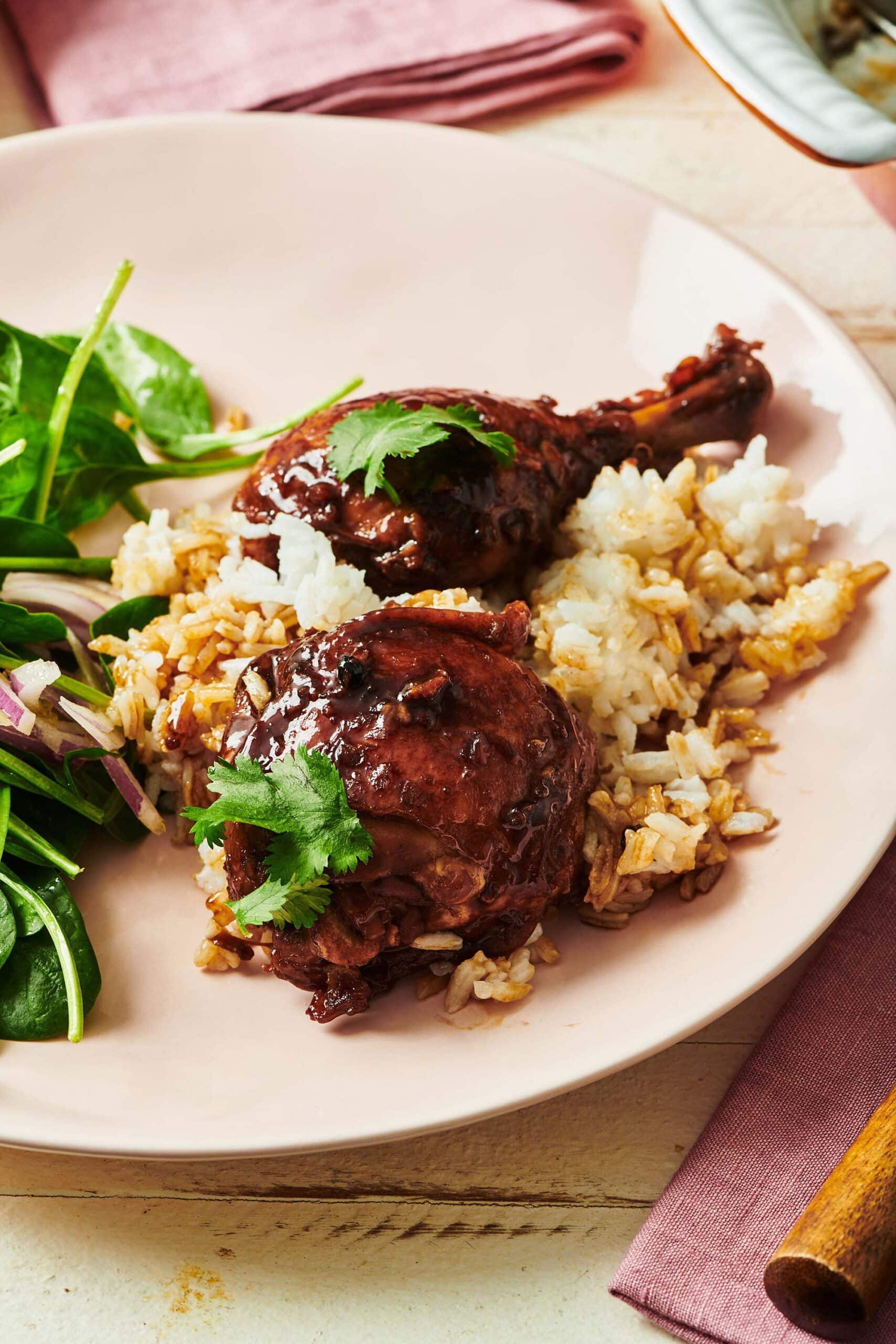
How to Make Chicken Adobo
- Marinate the chicken: Combine the garlic, vinegar, soy sauce, bay leaves, fish sauce, brown sugar, and pepper. Coat the chicken with the mixture and refrigerate for up to a day.
- Simmer: Pour the whole thing into a Dutch oven or large deep skillet and add in the chicken broth and water. Bring it up to a boil, reduce to a simmer, and simmer over an hour until the chicken is finished cooking and super tender.
- Finish the sauce: Remove the chicken from the sauce and continue to simmer to cook it down. The sauce will get beautifully thick and glossy. Then, you can return the chicken to the pan to heat through and coat it in the reduced sauce.
- Serve: Arrange the rice on a platter and top with the chicken and the sauce. Garnish with cilantro.
FAQs
White meat is rarely used in chicken adobo. As Victoria said, “Pinoy (persons of Philippine descent) don’t like white meat.” Dark meat is juicier, more flavorful, and better suited to long and slow cooking than white meat, which can dry out. You can use a combination of thighs and legs, or choose one or the other.
Mexico and the Philippines both have their own adobo dishes because they were each part of the Spanish empire at one time. However, the dishes are quite different. Filipino adobo features thick, salty soy sauce and sukang maasim, a Filipino type of vinegar. Mexican adobo usually includes some spicy chiles and sometimes tomatoes.
Rice vinegar is a great substitute for white vinegar or sukang maasim in adobo sauce. A plainer, cleaner vinegar is best, so stay away from red wine or apple cider vinegar.
Most Filipino adobos are made with either pork (adonong baboy) or chicken (adobong manok) as the main ingredient. The most common type of chicken adobo is also known as adobong itim, meaning black chicken, which refers to the deep color the soy sauce gives the meat. Another way adobos are categorized is dry abodo vs. wet adobo. Dry adobos are just barely saucy, and wet adobos are almost stew-like. (See above for more about the difference there!)
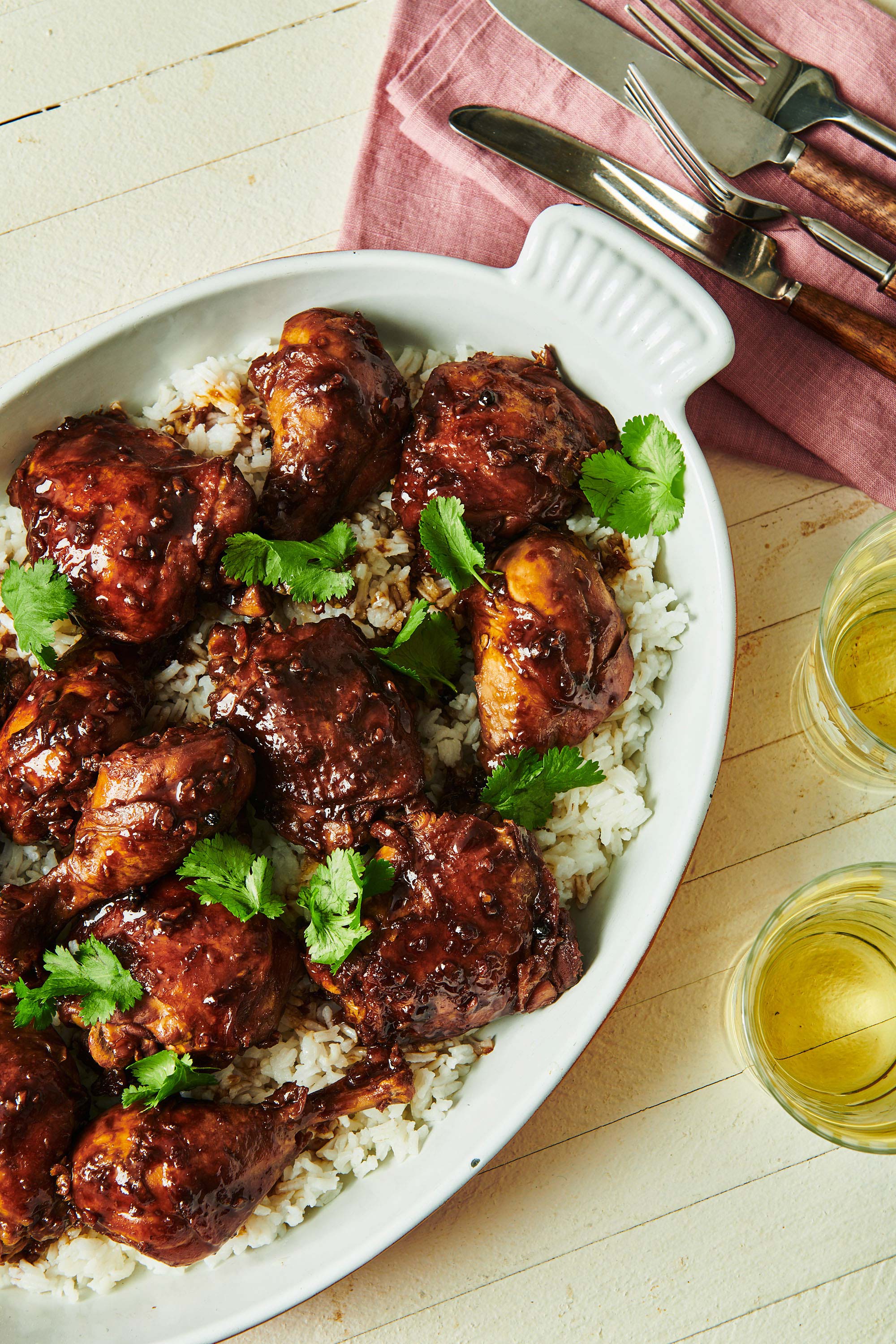
Best Pan for Making Adobo
You will want to use a wide-bottomed pan, like a brazier, as you want as much the evaporation of the liquid to be slow but steady. A deep large skillet works well, a large Dutch oven is also a good choice, but avoid deeper stew or soup pots which won’t allow the liquid to evaporate at the pace it should for everything to get to where it needs to be at the same time. A rondeau is the type of pan used in the Philippines for making adobo, shaped similarly to a brazier.
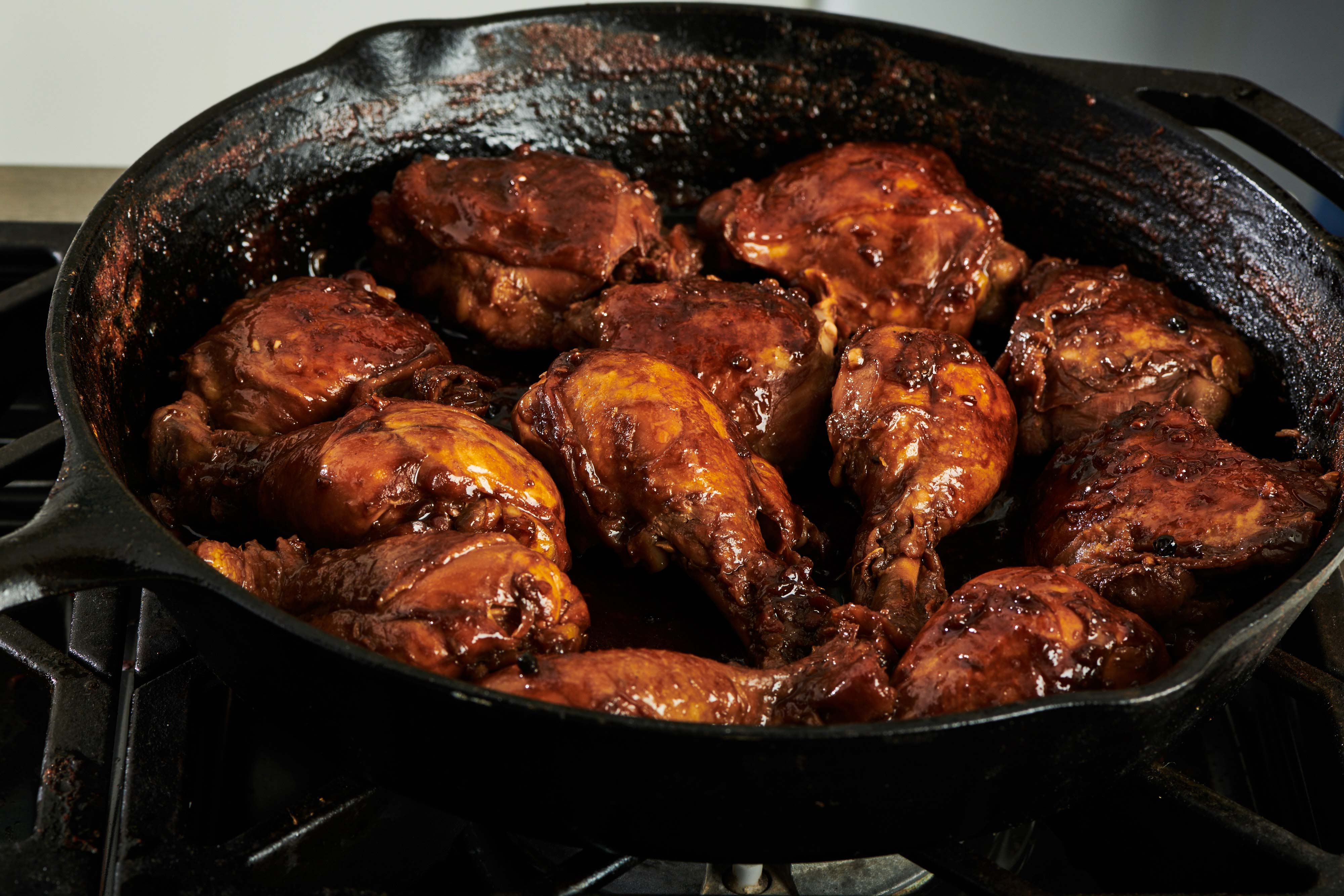
Make Ahead Adobo
As with many soups and stews, it’s best to plan to prepare the dish ahead of time and let it sit in the fridge for a day or so. Then, when you reheat it gently, you’ll get a dish with the best expression of the flavors. The flavors will meld together in a very rewarding way. Not that the adobo won’t be delicious right after you make it! It will, but the dish will just have a deeper, more cohesive flavor that develops over a bit of time.
With a bit of time, the sourness from the vinegar will also have a chance to mellow slightly — you still want it to be tart and sour, but the flavor should be pronounced but not overwhelming. In the Philippines, chicken adobo is usually made the day before eating, as it really does improve with a day or two in the fridge.
Vinegar in Adobo
The presence of vinegar in Filipino food is a constant, one of the most prevalent flavors in the cuisine. Vinegar was originally used not only as a flavoring but as a preservative. In pre-refrigeration times, vinegar helped in preventing meat and other perishable foods from going bad. And even now, with refrigeration, the vinegar helps the cooked adobo stay good for up to a week.
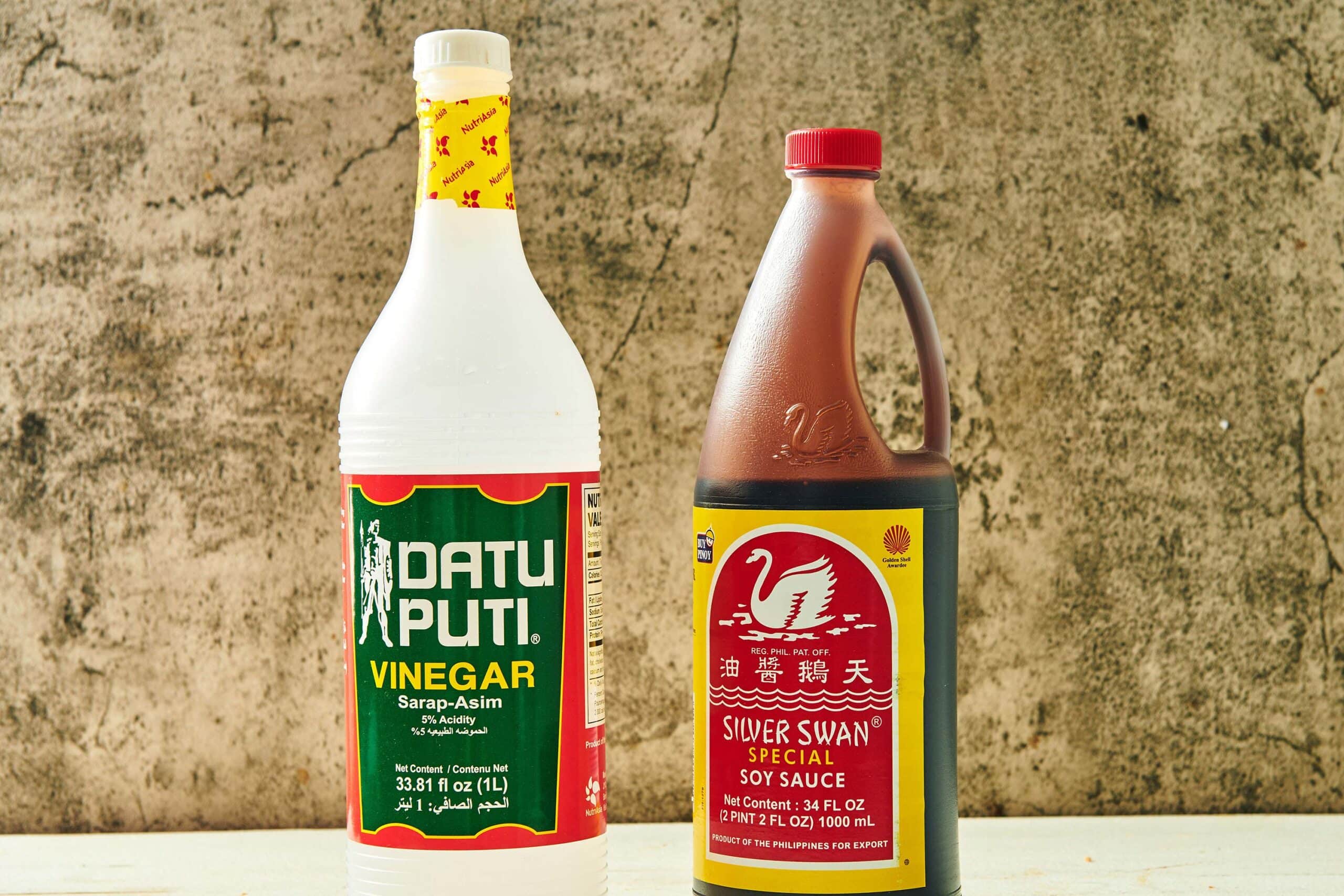
The most used type of vinegar in Filipino cooking is white vinegar made from sugarcane. It is called sukang maasim, and it is slightly less acidic than distilled white vinegar. If you can’t find it, you can use white wine vinegar, rice vinegar, or cider vinegar.
Another vinegar used often in Filipino cooking is called sukang iloco, and it is a dark brown, made of the molasses that is left over from making sugar from sugarcane. In the Philippines, there are lots types of vinegars available, and if you have a good source for them, it‘s a fun way to play with your favorite Filipino and adobo recipes.
What to Serve With Chicken Adobo
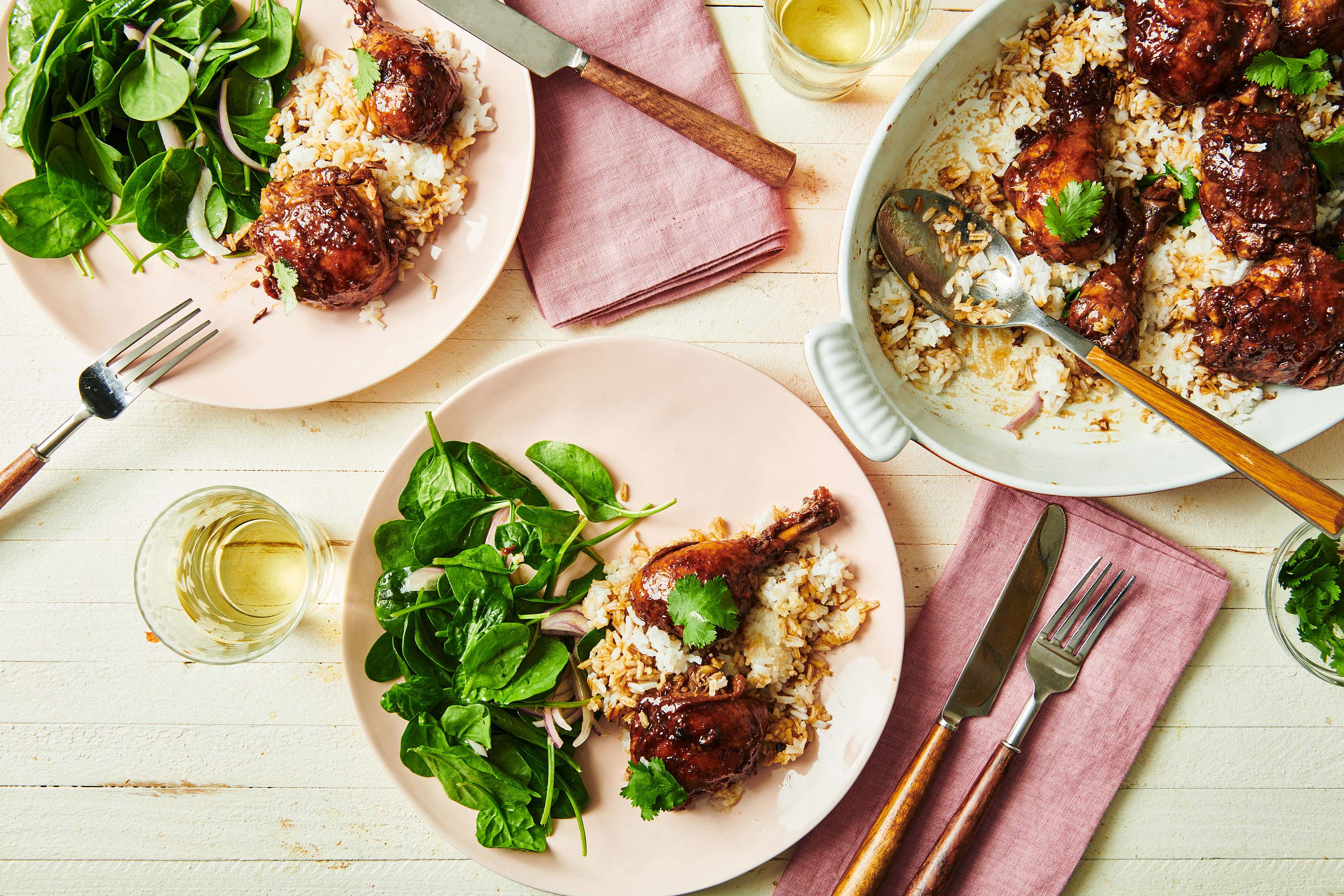
More Braised Chicken Recipes
- Chicken Thighs with Onions and Green Olives
- Braised Chicken with Baby Artichokes and Mushrooms
- Coq au Vin
- Chicken Paprikash
Pin this now to find it later
Pin It
Chicken Adobo
Ingredients
- ¼ cup minced garlic
- 1 cup white wine or rice vinegar (or sukang maasim Filipino vinegar)
- ¾ cup soy sauce
- 2 bay leaves
- ¼ cup fish sauce
- 2 tablespoons light or dark brown sugar
- 1 teaspoon whole black peppercorns
- 4 pounds bone-in chicken thighs or legs (or a combination)
- 1 cup reduced-sodium chicken broth
- 1 cup water
- Hot white rice (for serving)
- Fresh cilantro leaves (to serve)
Instructions
- Mix the garlic, vinegar, soy sauce, bay leaves, fish sauce, brown sugar, and pepper in a large container or a heavy-duty sealable bag. Add the chicken, turn to coat well with the marinade, and seal the container. Refrigerate from 6 to 24 hours.
- Transfer the mixture to a large (as wide as you have it!) deep skillet or a Dutch oven. Add the chicken broth and water. Bring to a boil over high heat, then immediately reduce the heat and simmer, uncovered, until the chicken is cooked and tender and the liquid has evaporated by about ¾, about 1 hour to 1 hour and 10 minutes. After the initial boiling, make sure the liquid stays at a gentle simmer and doesn’t return to a boil. Turn the chicken every 10 to 15 minutes so that it cooks evenly.
- When the chicken is cooked through and tender, remove it with tongs (carefully, it should be falling apart tender!) to a plate. Continue simmering the liquid until it has reduced a bit further and has slightly thickened. You should have about 1 1/2 cups of sauce. Return the chicken to the reduced sauce in the pan and turn it to give it a final glazey coating of the sauce.
- Place rice on a serving platter, and place the chicken on top of the rice, pouring any extra sauce over the chicken. Serve hot, with the fresh cilantro sprinkled on top, if desired.

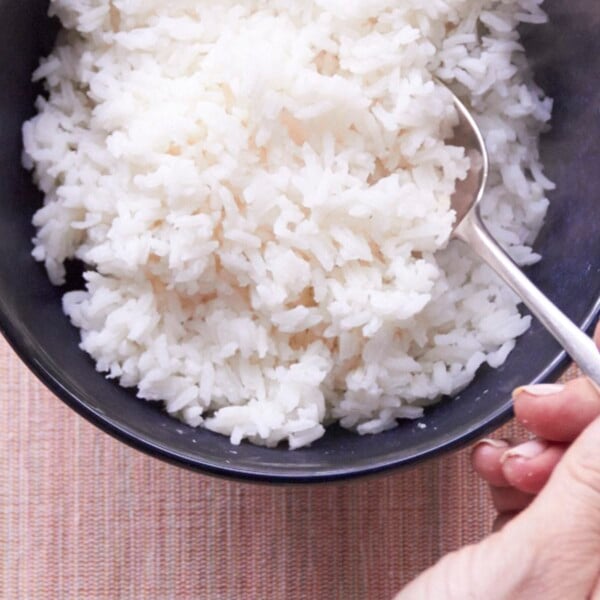
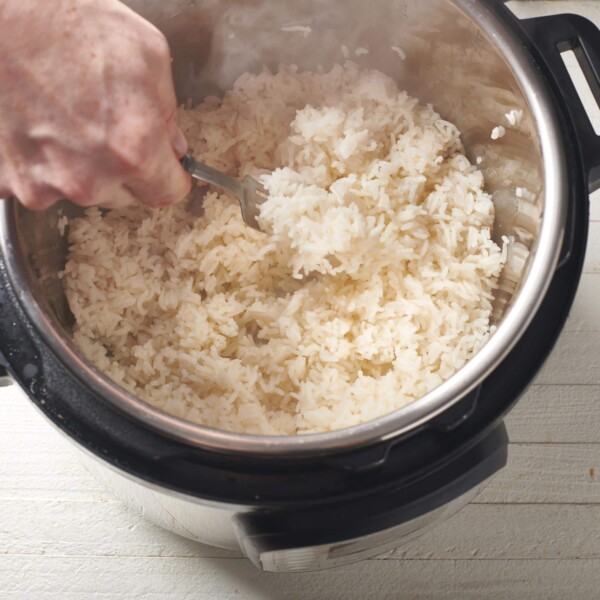
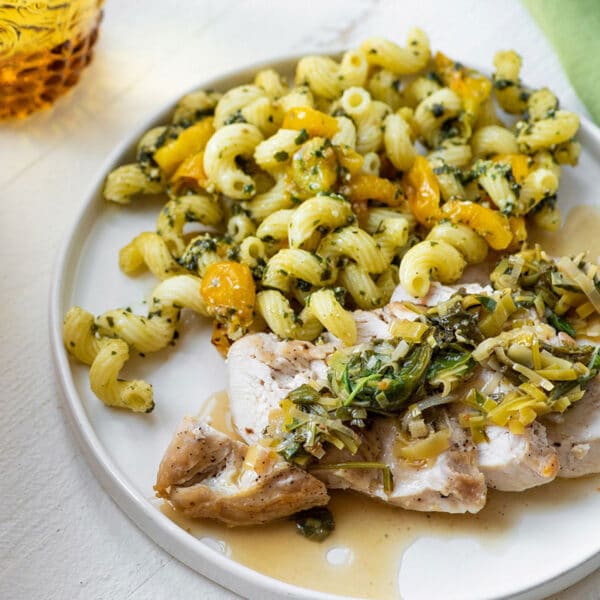
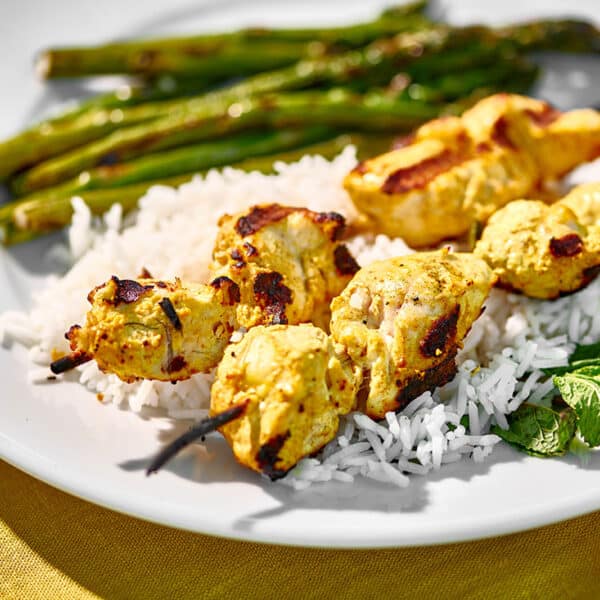
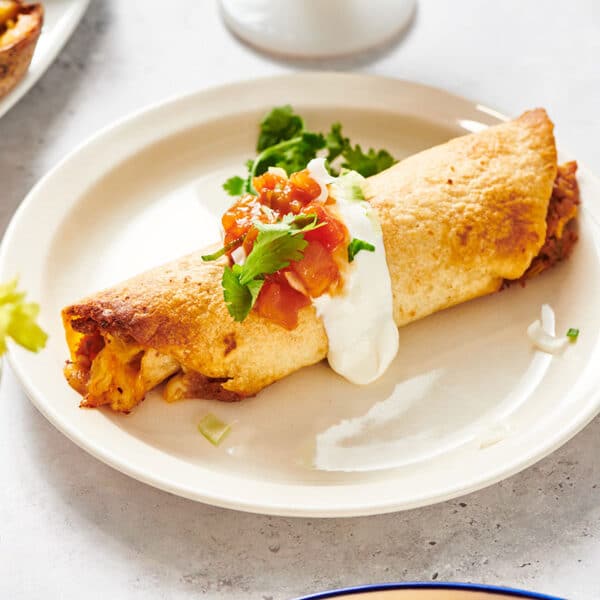
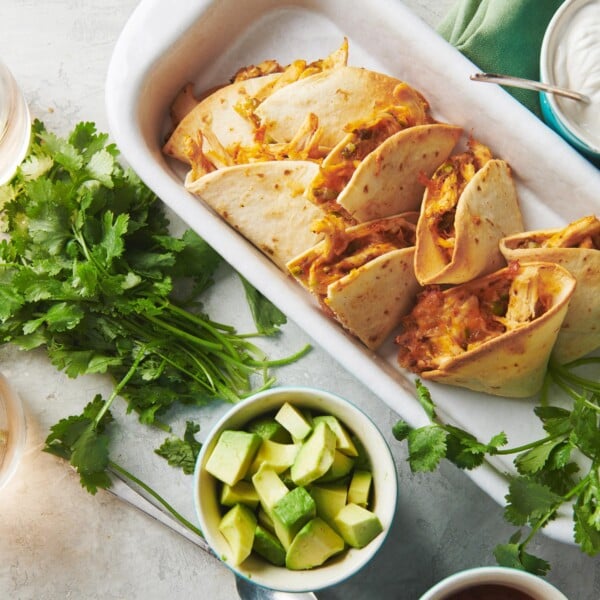









Katie –
The directions call for chile oil in the marinade but it is not in the ingredient list. How much chile oil should I use?
My family has enjoyed all of your recipes I have made. When my kitchen was unusable for 5 months due to remodeling, your website was my “go to” place for delicious recipes I could prepare in my slow cooker or on a hot plate.
Thank you the fabulous recipes.
I ended up skipping the chili oil, but feel free to add a teaspoon or more to the recipes along with the brown sugar if you want some more heat! My adobo “advisors” Prefer a milder heat level in their adobo, so I ended up taking it out.
I made this for dinner last night and it was amazing. My entire family loved it.